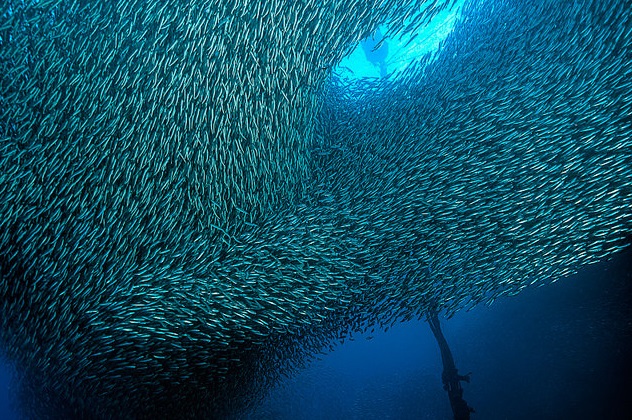The latest research report from the Sea Around Us investigates the use of fish for feeding livestock and farmed fish. In this report, we document the country by country analysis of which fish are used for feed, and in what forms. This is the first time this type of research has been conducted on a global scale.
Nearly 20 million tonnes of fish are not used for human consumption each year – but rather, are mainly fed to other fish, often during the process of ‘fish farming.’ Given the importance of fish as a source of food for billions of people around the world, for its protein and its micro-nutrients, the use of fish for purposes other than human consumption could negatively affect global food security.
To better understand this, I used methods similar to those used in ‘catch reconstructions’ to find out how much fish each country catches to feed other fish.
This work required me to comb through national statistics, peer-reviewed literature, newspapers, press releases, and other sources to gather data on the use of different species for these different purposes. The goal was to find out the amount of fish that was eaten by animals (fish or livestock) and by humans – and then to do this for each country, fish species, and time period from 1950-2010.
Most of the fish used for fishmeal are small bony fish that live near the ocean surfacelike anchovies, herrings, and sardines. While these are often passed over in favour of high demand species like tuna and salmon, they have a high concentration of good quality protein and micro-nutrients such as Omega-3 fatty acids.
Not only is this work useful to understand how we use fish to feed people (either directly or indirectly), it can also add value to other projects we are involved in. This new data will be incorporated into the newest version of our price estimation to better evaluate the value of fisheries globally. As fisheries used for feed are often less valuable than fisheries used for human consumption, accounting for the end use of the fishery landings allows us to make better estimates of the value of fisheries and to understand fishing behavior as it is driven by prices.
There are major impacts of using fish for animal feed rather than for feeding people. This work begins to uncover these trends in how this use has changed over time for every country and every species. This allows us to understand these impacts in a better way, and to propose solutions of how we can fish sustainably while maximizing economic and nutritional benefits to human society.
To learn more about the use of fish for feed and its implications, read the report, or Tim Cashion’s blog (the lead researcher) Fishing For Feed.
You can also follow Tim Cashion on Twitter: @FishingForFeed



![SardinesCloseup[Crop]](http://www.seaaroundus.org/wp-content/uploads/2016/05/SardinesCloseupCrop.jpg)